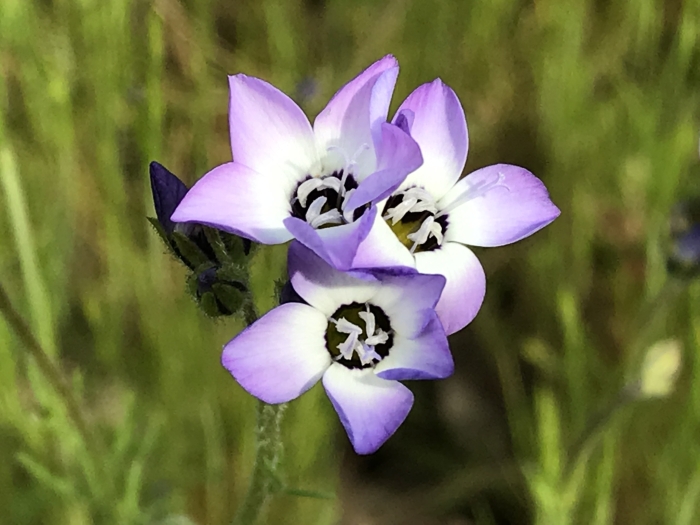Bird’s-Eye Gilia
(Gilia tricolor)
Bird’s-Eye Gilia (Gilia tricolor)
/
/

rappman
CC BY 4.0
Image By:
rappman
Recorded By:
Copyright:
CC BY 4.0
Copyright Notice:
Photo by: rappman | License Type: CC BY 4.0 | License URL: http://creativecommons.org/licenses/by/4.0/ | Rights Holder: rappman | Publisher: iNaturalist | Date Created: 2019-03-23T21:26:25Z |



























































Estimated Native Range
Summary
Gilia tricolor, commonly known as Bird’s-Eye Gilia, is an annual herb native to the grasslands, open woodlands, and oak savannas of California. It is a member of the phlox family, Polemoniaceae, and is characterized by its delicate, slender stems and finely divided leaves. The plant typically grows to a height of 12 to 18 inches (30 to 45 centimeters). Bird’s-Eye Gilia produces charming flowers with five green sepals and five bell-shaped, fused petals. The petals exhibit a gradient of colors, starting with blue-violet tips, transitioning to purple spots, and ending with yellow throats, which gives the plant its tricolor name. The flowering season occurs in spring, and the blooms are highly attractive to pollinators such as bees and butterflies.
Bird’s-Eye Gilia is valued for its vibrant and showy flowers, which add a splash of color to wildflower gardens, meadows, and informal borders. It is drought-tolerant, making it suitable for xeriscaping and low-water-use gardens. This plant thrives in full sun to part shade and prefers well-drained soils. While it is generally easy to maintain, it can be susceptible to fungal diseases if grown in conditions with poor air circulation or overly moist soils. Bird’s-Eye Gilia is not known for aggressive roots or significant pest problems, making it a low-maintenance choice for gardeners.CC BY-SA 4.0
Bird’s-Eye Gilia is valued for its vibrant and showy flowers, which add a splash of color to wildflower gardens, meadows, and informal borders. It is drought-tolerant, making it suitable for xeriscaping and low-water-use gardens. This plant thrives in full sun to part shade and prefers well-drained soils. While it is generally easy to maintain, it can be susceptible to fungal diseases if grown in conditions with poor air circulation or overly moist soils. Bird’s-Eye Gilia is not known for aggressive roots or significant pest problems, making it a low-maintenance choice for gardeners.CC BY-SA 4.0
Plant Description
- Plant Type: Herb
- Height: 0.5-1.5 feet
- Width: 0.333-1 feet
- Growth Rate: Moderate
- Flower Color: Blue, Purple
- Flowering Season: Spring, Summer
- Leaf Retention:
Growth Requirements
- Sun: Full Sun, Part Shade
- Water: Medium, High
- Drainage: Fast
Common Uses
Bee Garden, Bird Garden, Border Plant, Butterfly Garden, Drought Tolerant, Hummingbird Garden, Low Maintenance, Showy Flowers
Natural Habitat
Grasslands, open woodlands, and oak savannas of California
Other Names
Common Names: Bird’s-Eyes, Tricolor Gilia, Dreifarbige Gilie, Bukettgilia
Scientific Names: , Gilia tricolor, Gilia tricolor var. longipedicellata, Gilia tricolor f. nivalis,
GBIF Accepted Name: Gilia tricolor Benth.